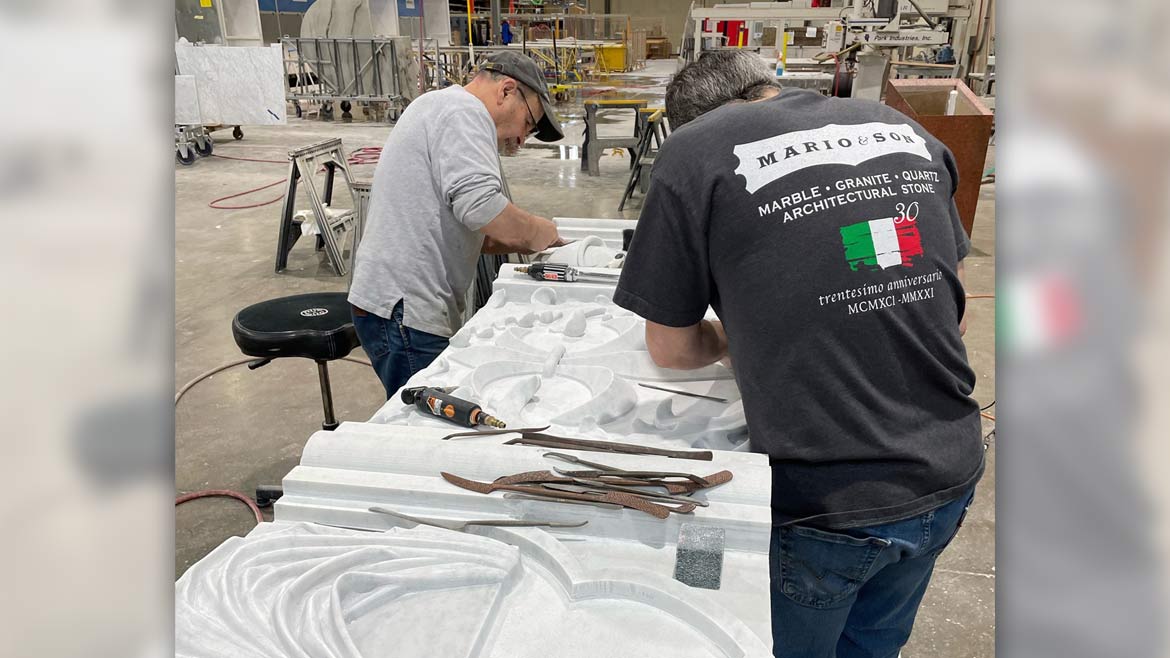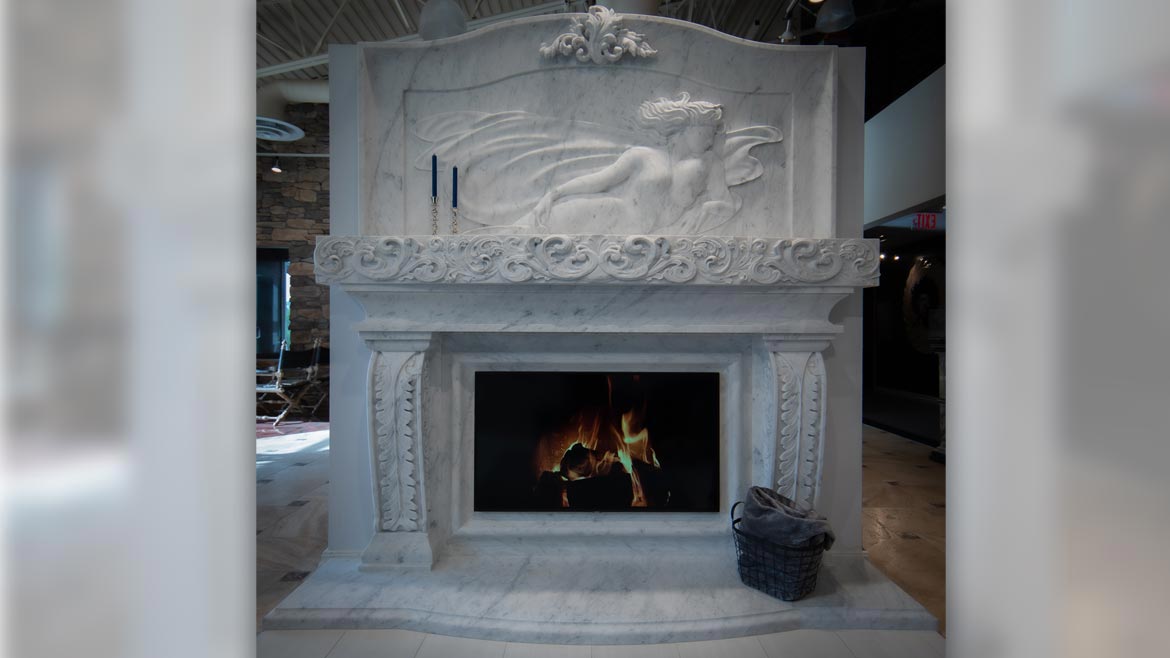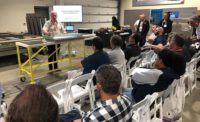Among the questions asked to a panel of stone industry veterans during a Fabricator Forum, held at Coverings in early April, were: What sets you apart in the industry? What makes you exceptional? This sparked Joey Marcella to think about his own business, Mario & Son in Liberty Lake, WA, which in addition to fabricating countertops has found a fruitful niche in producing three-dimensional stone pieces.
“When those questions were posed to us, I thought about what I could talk about,” Marcella told the audience. “I have been on a couple of these panels over the years. I have sat in the audience on many over the years, and they always seem to gravitate towards the same things: porcelain, quartzite problems and things like that. So I wanted to talk about something different today, which kind of relates to what I do with my company. It could be a lot of opportunities that are missed, I think, for a lot of people.”
Marcella asked the audience how many had a CNC machine, and for those who do, how many use it for cutting pieces other than countertops? He then asked participants if they would like to use those machines for fabricating more than countertops if there was money in it.
“Let me talk about what we do as a company, because I will tell you there is a lot of money in it,” he said. “We do a lot of countertops. That is our bread and butter and probably always will be, but over the last several years, we have gotten more into the dimensional market.”
Marcella went on to explain what it takes to get the most out of a CNC machine. “When you buy one of these machines, you get the brochure and open it up to see the pictures of all these crazy things these five-axis saws can do, and you think great, I can push the button and it will do that,” said Marcella. “Then you realize that it doesn’t really work that way. You have to learn a little more about that. How can you make these machines more productive? It is pretty simple if you apply yourself and know what you are getting into from the onset.

Workers at Mario & Son finish a cubic stone piece after it comes off the CNC machine. Photos Courtesy of Mario & Son
Finding the Right CAD Technician
“I will go over a couple of things that we learned that has helped us bridge that gap – getting out of the rectangle business and into the more lucrative cubic business,” Marcella went on to say. “The main thing is the CAD end of it. The CAD level has to rise considerably. Your countertop guys aren’t going to be able to handle this level of CAD without some schooling. You can outsource it, but it does gets expensive. That is not a problem, but you have to watch who you are outsourcing it to because there are two types of CAD guys in this world. You get the technicians and you get the artists. You need a blending of the two, because if you get the technicians they get you very precise drawings but they don’t understand the design aspect of things. And when you are working in this world, your clients need the design aspect of it and you will have revision after revision after revision and your costs will go through the roof. If you get the artist, you will get beautiful drawings that don’t really meet the needs of the technical aspect of the project. Again, you are going to have revision after revision. You need the blending of the two. These guys are hard to find. You have to search them out, but they are out there. Or, you can send your best CAD guy to school, but trust me, this is pretty labor intensive stuff. It is not unusual for the guy we use for some of our more complicated drawings to go in and out of six or seven different CAD programs. To me, that is the biggest hurdle. If you can separate yourself from that, your foot is in the door.”
Establishing Relationships with Suppliers
Another consideration when doing cubic work is the material, explained Marcella. “You have to have relationships that get you into cubic material,” he said. “You are not going to find that at your local distributors. If you are doing basic stuff like moldings that you can get out of a slab, you can do that all day long. But if you want to get into thicker work like fireplaces and tubs, than you have to get thicker material. You have to establish relationships in Italy or wherever you can buy this material from.”
Upgrading Your CNC Machine
For those serious about making the jump to three-dimensional work, Marcella explained that they should consider upgrading their CNC machine. “The next hurdle that you are going to have to deal with is that you will run out of Z stroke very quickly,” he said. “Most of the saws you are using now for the countertop industry have a Z stroke of maybe 8 inches, which is fine if you are doing countertops. You can do a fair amount of dimensional work with that, but you are going to find that it is a very frustrating part of those saws when you try to make the leap into dimensional work. If you are going to get serious about this, you are going to have to get into the next level saw -- a larger saw. Something with a lot more Z stroke.”

Among the custom stone pieces the company produces are large detailed fireplaces. Photos Courtesy of Mario & Son
Finishing Work
The trickiest part of all of this work is how to finish what comes off the machine, according to Marcella. “Your guys that are polishing are all capable of doing this work – technically,” he said. “The question is do they have the patience? Even my best guys will get frustrated after about two hours. This is not turn and burn like with countertops. It is very tedious. It takes a long time and it takes a lot of patience. So if you have one of those guys on your staff, keep him.
“The question I get a lot is how do I get such a high polish?” Marcella continued. “I use sandpaper. If you have ever seen an edge polished with diamond pads verses one polished with sandpaper, it is night and day. You can’t get that really clear depth that you get with sandpaper.” Marcella explained that he is referring to sculpture or profile work. He also mentioned that it is wise to invest in chiseling tools.
“It takes a lot of time, but this type of work is incredibly lucrative and there is very little competition,” said Marcella. “You are entering markets that are wide open right now. In this world, I name my price.”




